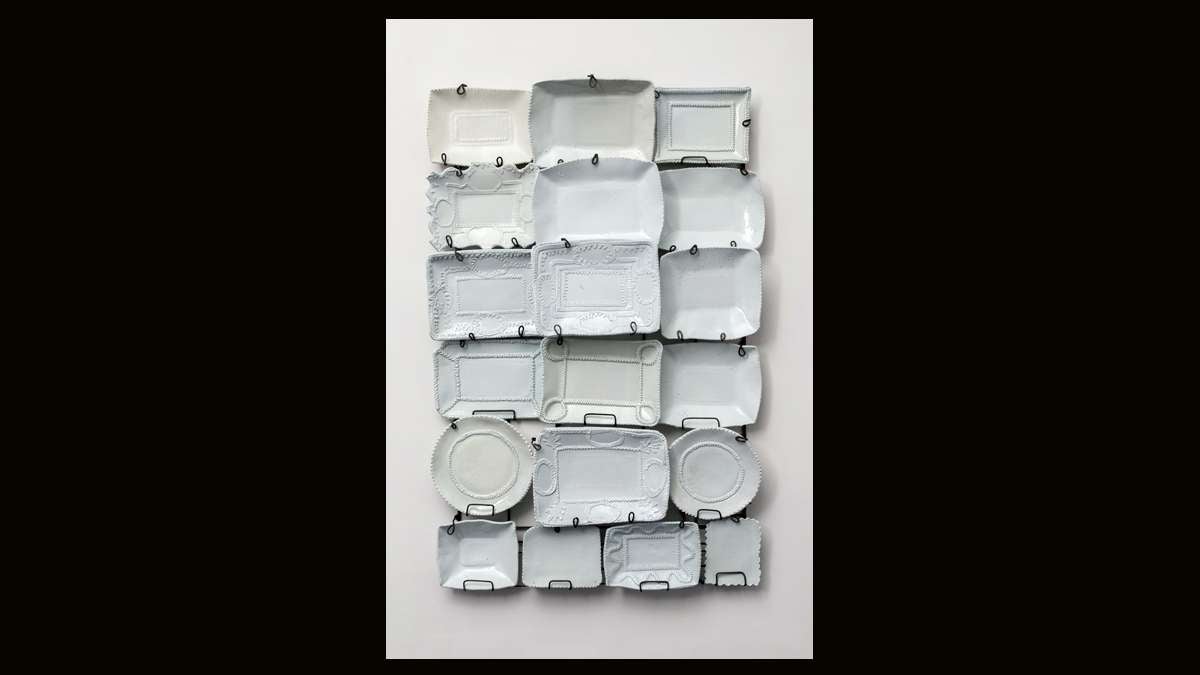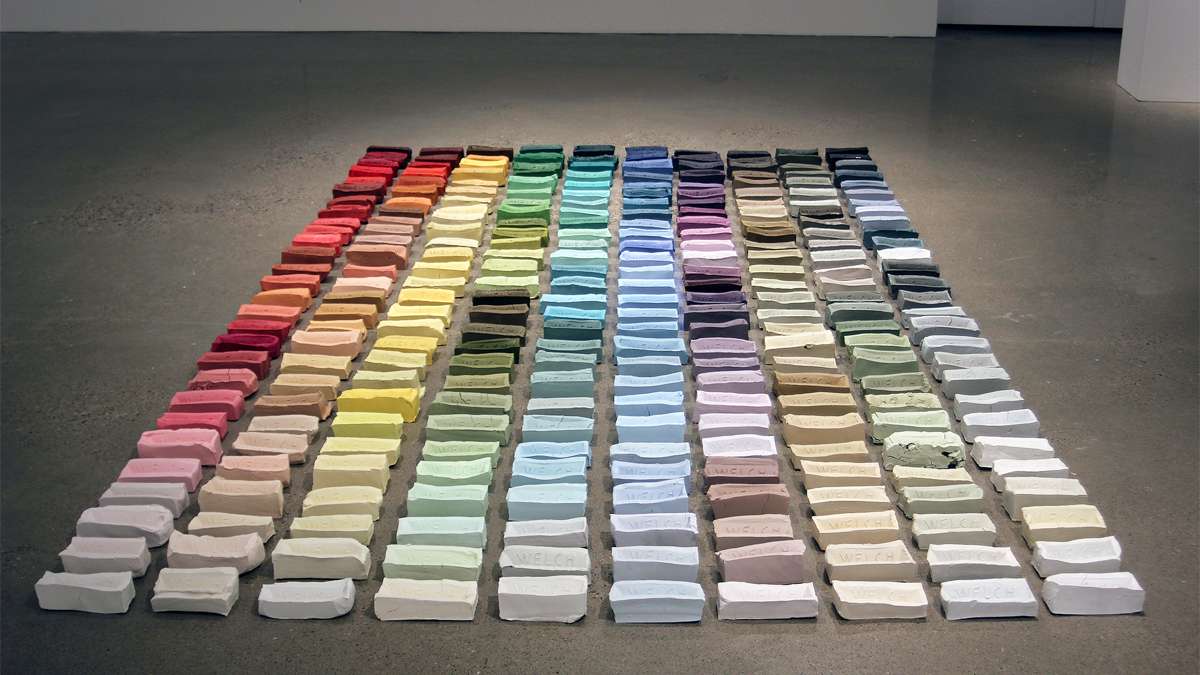Ceramic ware exhibit ‘Beyond Function’ now showing in Princeton
In its earliest days, ceramics was a form of pot making – it was literally pottery, jugs and vessels used to contain water, olive oil or wine. The function of early ceramics was purely domestic.
The dialogue about form versus function in pottery began in earnest in the 1950s when ceramic artists broke from the craft tradition, creating closed vessels and abstract shapes whose only function was to be aesthetically pleasing. Curator Madelaine Shellaby takes a fresh perspective in Beyond Function, on view at the Arts Council of Princeton through June 6. Artists Ann Agee, Jill Allen, Rebecca Chappell, Jim Jansma, Shellie Jacobson and Adam Welch create work that references utilitarian traditions while expressing entirely new formal purposes.
Allen’s objects have been arranged on a wall, forming a composition, but each work stands on its own. The playful ceramic shapes suggest kitchen and other domestic utensils – a wire whisk, an egg beater, a vessel with a spout – as well as a princess telephone, a syringe, diminutive ballet slippers dangling from a rearview mirror, or a hot water bottle. Yet they are none of the above. The Philadelphia resident – curator Shellaby found her through the Clay Studio, where Allen is an instructor – “playfully imagines objects that, in her words, ‘groggle, vrt and orlec’ as they mimic functional tools we might use everyday,” says Shellaby. Individual works come with titles such as “Vitrafinger,” “Vitradropper” and “Vitrawhipper”; they are barely more than four inches in any dimension.
“Since childhood I have been attracted to things that are unusual, beautiful or thought provoking,” says Allen. “Whether man-made or mother-nature-made, objects of beauty and mystery continuously draw me in and provide endless sources of inspiration for the things I make. I use clay for its ability to be formed into any shape imaginable.”
Jacobson creates forms that look like ancestral dwellings, textured with squiggles, shells and serpents and resembling cuneiform text or some other inscrutable language from another time. “My work is about the organic and plastic vocabulary of clay; how it can be torn, folded, pinched, scored, imprinted, pierced and textured as it is transformed into vessels,” she says. “To add to the vocabulary, I incorporate accidental marks during the building process.” Inspired by nature, personal history and dream imagery, Jacobson is interested in ancient written language and the graphic of the text. The vessels contain little screened windows for peering into the abyss.
Agee appropriates traditional design motifs for wall installations that serve as commentaries on domestic life. A magnificent display of white serving platters looks, at first, like something out of Martha Stewart Living, or your mother’s cupboard display of white platters that were for show only, never used. But look closely and you will see that these platters are askew, made with a crude slab construction, then delicately ornamented with flowers and borders and glazed to look like lace. What’s more, the iron structure holding them together won’t let go – you can’t just pull one out and layer it with roasted peppers and eggplant. It is the signature piece for the Beyond Function theme.
The artist riffs on herself in another wall display of dishes, these glazed pink, white and blue. The center of each plate becomes a canvas on which the artist draws in blue glaze – each scene is a display of dishes in the kitchen sink. The iron rack holding the assemblage of serving platters together, as one work of art, also serves to keep us from having to wash the dishes. If you can’t use them, no need to wash them.
Born in Philadelphia and now living and working in Brooklyn, Agee, who has taught at Princeton University and now teaches at Pratt, also creates paintings that, according to a review in Art in America, “evince the tactile pleasures of home life and material culture and subverts the often-negative associations of femininity with decoration.”
You won’t miss the installation by Adam Welch – in fact, don’t trip on it. His rows of pastel color samples of bricks take center stage on the floor. “A large body of my work focuses on the brick as a shape and a concept, involving an intellectual investigation oriented toward art theory and ceramic history,” he says. “There is no more singular primary object, pared down, than the brick, and it fulfills so many functions in daily life.”
Welch, who directs Greenwich House Pottery in New York, has been making brick for more than a decade. Speaking of domesticity and Martha Stewart, he’s painted the bricks the colors of Stewart’s paint samples. “I particularly like Martha’s colors,” he says.
Continuing the domestic theme, Rebecca Chappell’s fruit bridges and baskets connect the practical with the formal. And Jim Jansma’s forms, with rough and ragged volcanic surfaces, refer to the gourds used historically for carrying and storing. Another reminder that the earliest function of ceramics was domestic.
“Their work challenges established definitions of art mediums, and invigorates our ideas about clay, installation and sculpture while highlighting the complex interaction of contemporary disciplines,” says Shellaby, who, as an artist, uses ceramics in her own multimedia installations.
_____________________________________________________
The Artful Blogger is written by Ilene Dube and offers a look inside the art world of the greater Princeton area. Ilene Dube is an award-winning arts writer and editor, as well as an artist, curator and activist for the arts.
WHYY is your source for fact-based, in-depth journalism and information. As a nonprofit organization, we rely on financial support from readers like you. Please give today.








